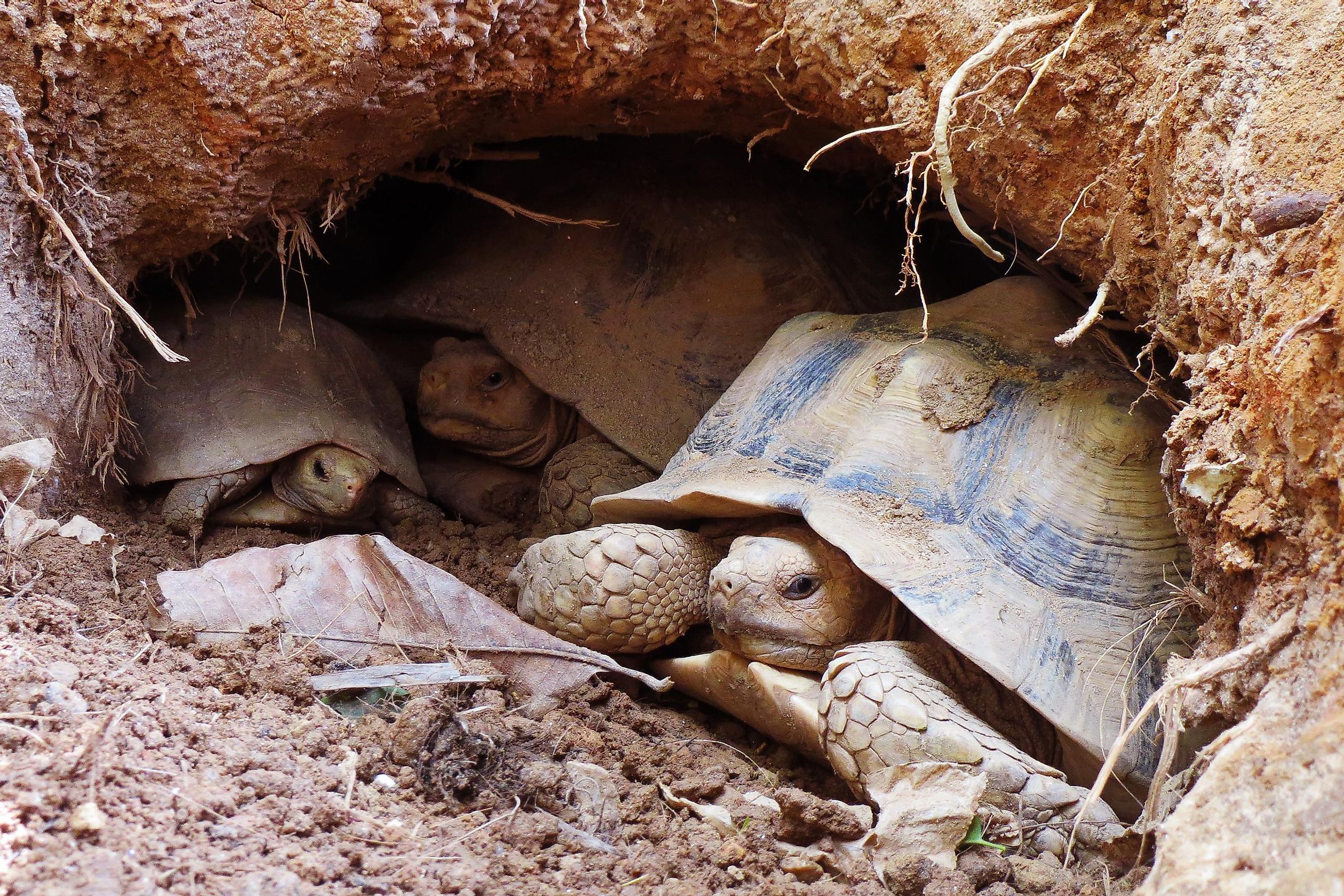
Animals That Live Underground
A majority of animals spend their entire lives staying above the ground. But a surprising number of well-known animals also live below the ground. Various faunal communities live underground, from microscopic bacteria, fungi, tiny insects, and earthworms to larger amphibians, reptiles, and burrowing mammals. The subterranean fauna not only interacts with one another but also with various other plants and animals and plays a crucial role in the sustainable functioning of all ecosystems. Therefore, when it comes to the overall ecosystem health, animals that live underground are as vital as those that live above the ground.
- Pika
- Fennec Fox
- Dwarf Mongoose
- Bilby
- Burrowing Owl
- Chinese Pangolin
- Nine-banded Armadillo
- Jerboa
- Pocket Gophers
- Desert Tortoise
Pika
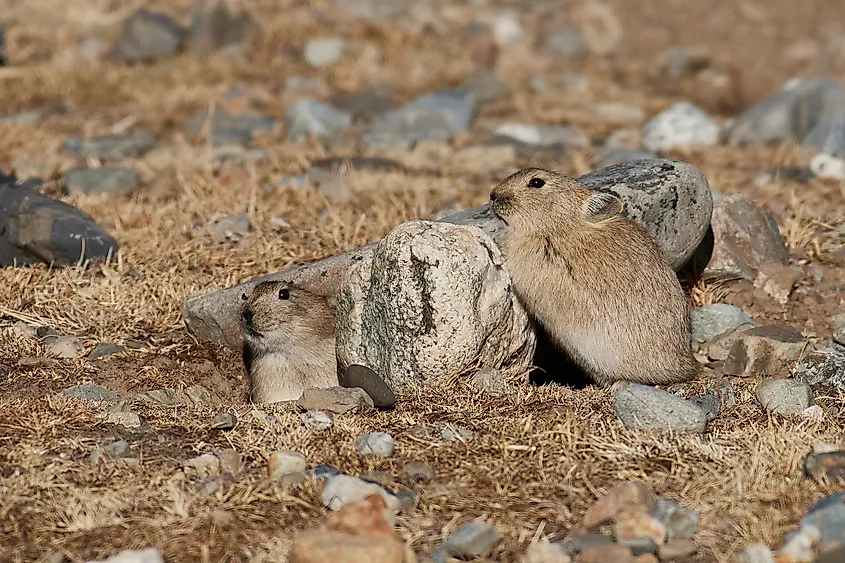
Pikas are small, brownish-gray-colored mammals native to the colder regions of Asia and North America. Most pikas live under rock piles, while some build crude burrows. These extremely inquisitive animals often sit beside their burrows or on rocky slopes and are easily seen in their habitats. Pikas have round ears, a short nasal region, and hind limbs about the same size as their forelimbs. Pikas are generally herbivores and practice hoarding food piles such as grasses, flowers, young stems, hay, soft twigs, pine needles, etc., during summer into their burrows to utilize them during the long, cold winter season. They produce high-pitched alarm calls when diving inside their burrows and are therefore also named the "whistling hares."
Fennec Fox
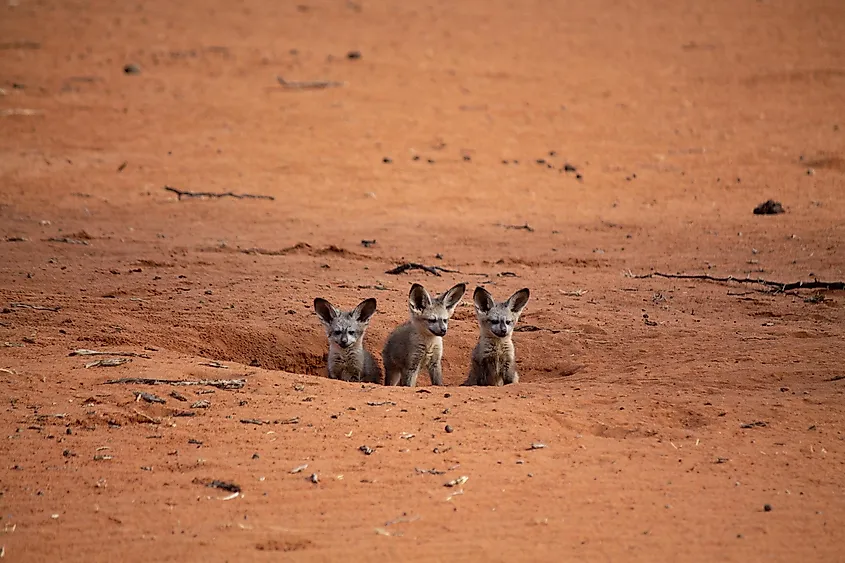
Fennec Fox is one of the cutest and most instantly recognizable animals that reside in the desert regions of North Africa. This fox has enormous ears, a small body, a pointy snout, and a tail with a black tip. Its thick sand-colored fur reflects sunlight during the daytime and provides insulation from cold at night. The Fennec fox digs extensive burrows (dens) in the sand for protection and habitation. Different fennec families locate their dens close together to interconnect with each other. An omnivore, the fennec fox feeds on lizards, skinks, geckos, small rodents, birds, etc. Considered an exotic pet in some portions of the world, the indigenous tribes of North Africa highly value the fur of the Fennec fox.
Dwarf Mongoose
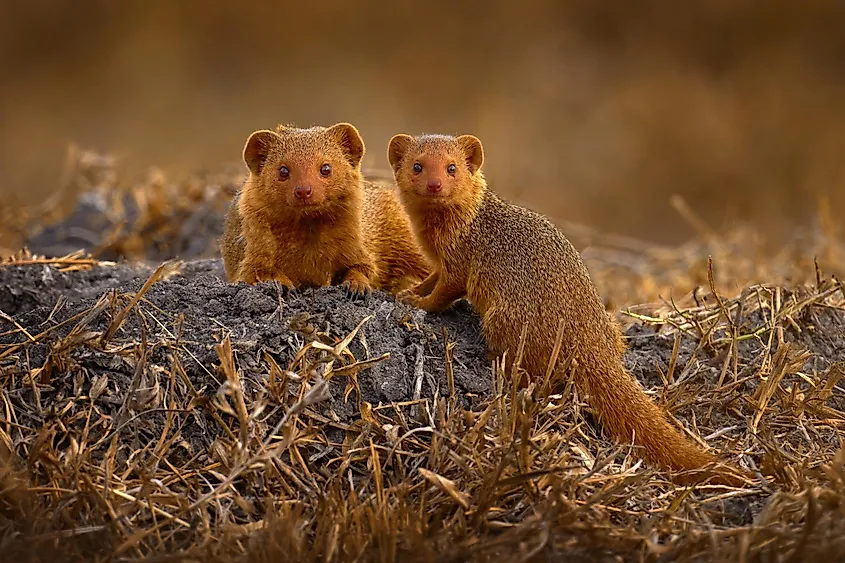
Found in Eastern Africa, Dwarf Mongooses are the smallest species of African mongooses. Having a body length of 18 to 26 cm, and a weight of 210 -350 g, the dwarf mongoose is Africa's smallest carnivore. The dwarf mongoose has small ears, a long tail, short limbs, and a large pointed head. The soft fur of this mongoose ranges from yellowish red to dark brown in color. Although these mongooses primarily inhabit dry grasslands and open forests, they prefer areas that include termite mounds, rock crevices, and woody vegetation. The mongoose uses the termite mounds as burrows and their favorite resting place. It usually feeds on insects, scorpions, small lizards, rodents, snakes, birds, etc.
Bilby
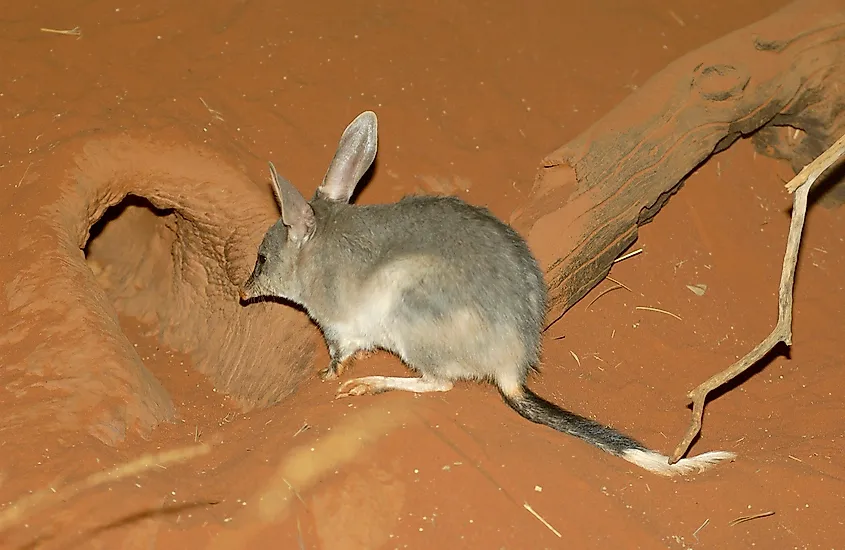
Also referred to as rabbit-bandicoots, bilbies are a group of desert-dwelling marsupial omnivores that belong to the genus Macrotis. Currently, the Greater Bilby is found in the Great Sandy and Gibson deserts of northwestern Australia and the southwestern parts of Queensland. The animal is most well-known for its long pointy snout, hairless ears, soft blue-gray fur, and prominent tail. The male bilbies are twice as large as females, with the largest weighing about 2.5 kg and growing up to 29 to 55 cm in length. Bilbies, being nocturnal omnivores, feed on insects, spiders, small lizards, worms, plant bulbs, native grasses, etc. The bilbies build many burrows within their home range that serve as their hiding spots during the daytime, nurseries for the young ones, and protection from predators.
Burrowing Owl
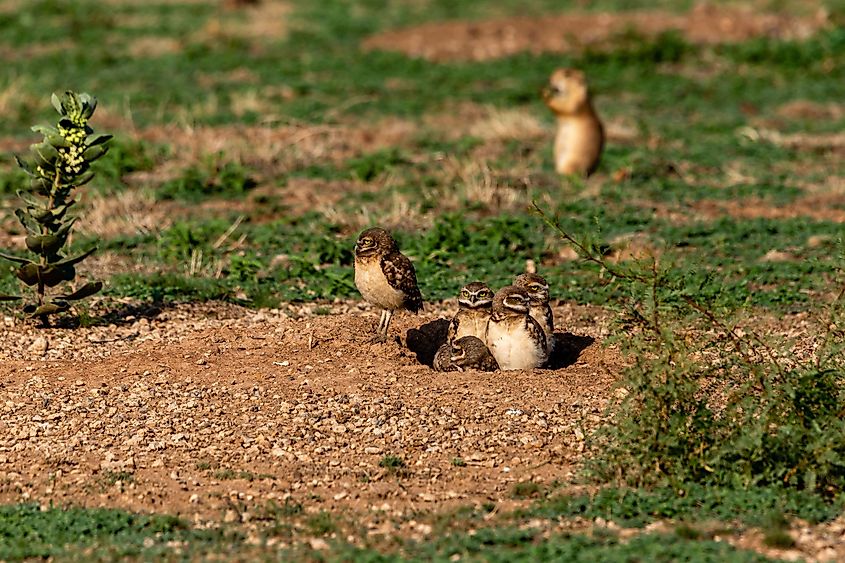
Also referred to as shoco, the Burrowing owl is a small, long-legged, sandy-colored owl having bright yellow eyes with prominent white eyebrows. This bird is currently found in open landscapes, mainly in grasslands and agricultural areas of North and South America. The owl nests in burrows dug by themselves or abandoned by other animals, such as prairie dogs or ground squirrels. They also nest in shallow, underground artificial structures that provide easy access to the surface. Burrowing owl remains active during the daytime and hunts usually at dawn or dusk. Burrowing owls primarily feed on invertebrates such as termites, crickets, grasshoppers, and scarab beetles. They also feed on small vertebrates like vesper mice, house geckos, snakes, frogs, and many more.
Chinese Pangolin
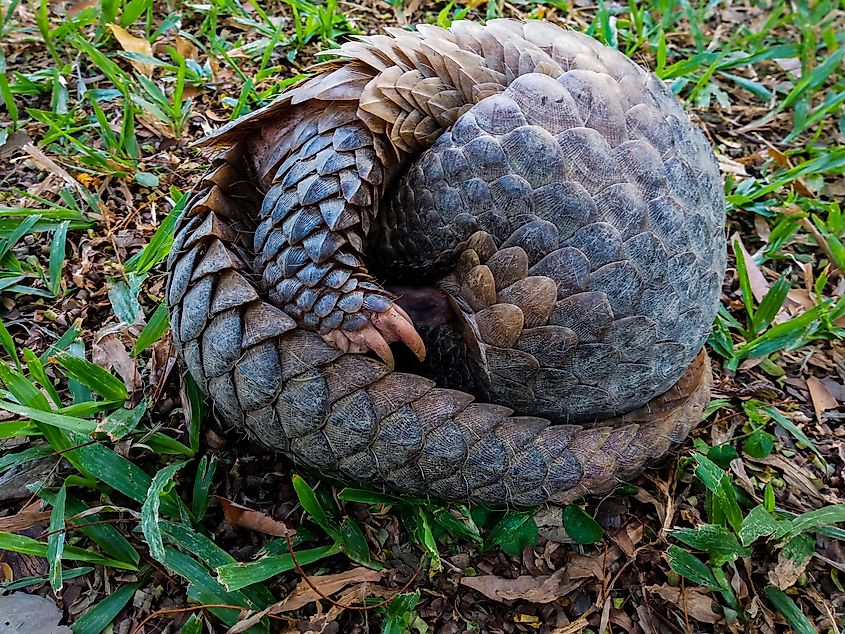
Listed Critically Endangered on the IUCN Red List, the Chinese pangolin is found in the northern portions of Southeast Asia and the Indian subcontinent, and the southern parts of China. Having the appearance of a scaly anteater, the head and body of a Chinese pangolin measure about 40 to 58 cm, while its tail measures about 25 to 38 cm in length. This pangolin has about 18 rows of overlapping scales that serve as a protective cover from predators. Feeding mainly on termites and ants, the Chinese pangolin digs deep with its large fore claws into the termite mounds and ant nests and extracts its food with its long sticky tongue. The pangolin also digs long burrows, which they use for sleeping as well as for hunting termites.
Nine-Banded Armadillo
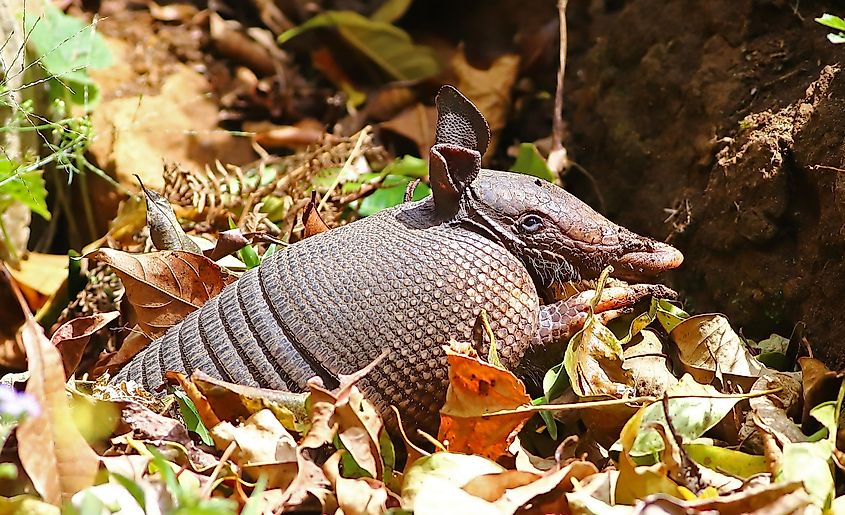
Also called the common long-nosed armadillo, this species is a solitary, nocturnal mammal found in North, Central, and South America. This armadillo has a gray to brownish-gray colored body that is about 38 to 58 cm long and a 26 to 53 cm long tail. The armadillo's outer shell (armor) comprises ossified dermal scutes that are covered by nonoverlapping scales linked by flexible skin bands. The animal's head, tail, back, sides, and outside surfaces of the legs are covered by this armor. With the help of the elongated claws on the middle toes of their forefeet, the armadillo digs burrows, which they use for refuge. Armadillos are extensive burrowers. A single armadillo can maintain up to 12 burrows within its range.
Jerboa
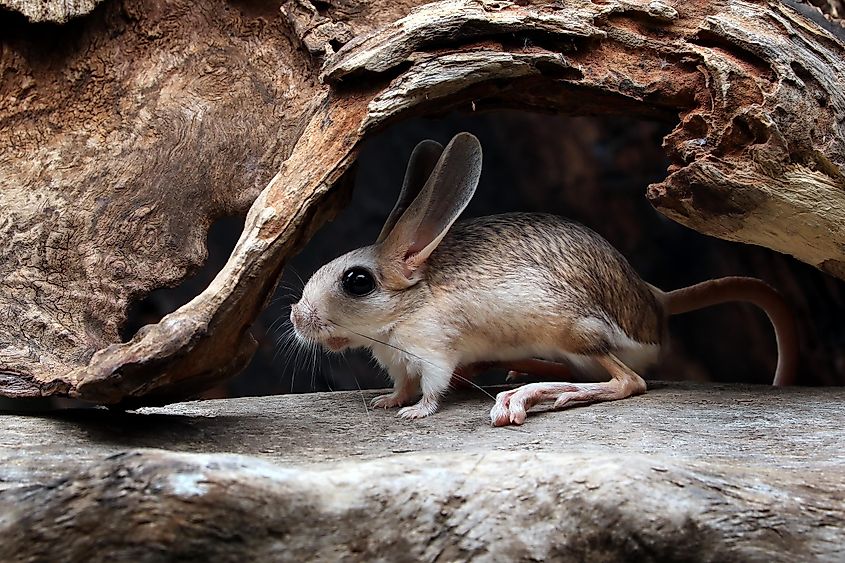
Jerboas are small nocturnal burrowing rodents that inhabit the hot deserts of Asia and North Africa. Their long tails, hind legs, and short forelegs help them to move by hopping, skipping, and running. When chased by predators, Jerboas can reach speeds of up to 25 km per hour. Jerboas spend most of the daytime hiding in their burrows to escape the heat and are, therefore, most active during twilight. A soil plug is placed at the burrow's entrance to prevent the hot summer heat from getting inside. Jerboas construct tunnels in mounds or hills to minimize the risk of flooding during the rainy season. They also use permanent winter burrows to hibernate during the winter season.
Pocket Gophers
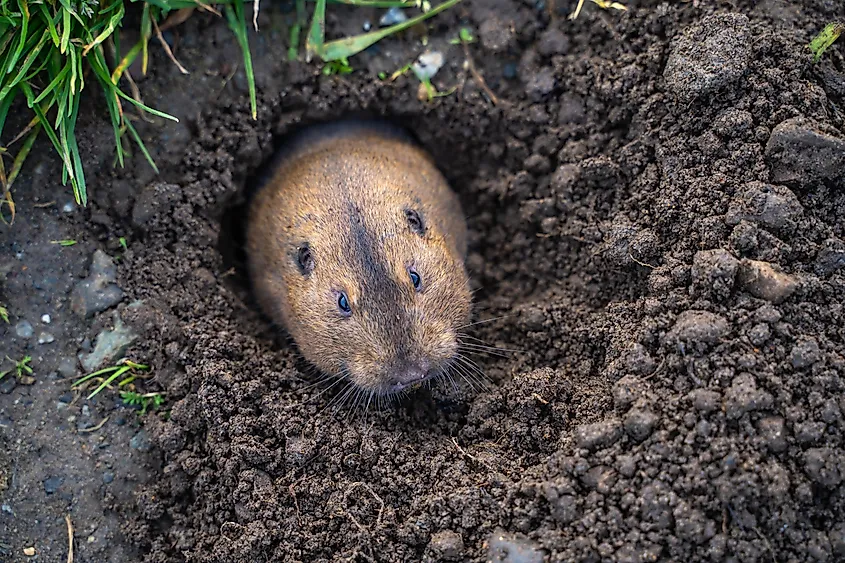
These fossorial medium-sized rodents are well-known for their fur-lined cheek pouches. The large cheek pouches transport bits of plant food gathered by the animal while foraging underground. The Pocket gophers have small eyes, ears, sensitive tails, whiskers, and clawed front paws, all of which help them to adapt to their burrowing lifestyle. A network of tunnel systems created by these rodents serves as a means of collecting food and providing protection from predators. The animal primarily feeds on plant roots, carrots, radishes, lettuce, and other vegetables with juices. Commonly found in woodlands and prairies across North and Central America, pocket gophers are sometimes considered agricultural pests for their ability to destroy farms and vegetable gardens.
Desert Tortoise
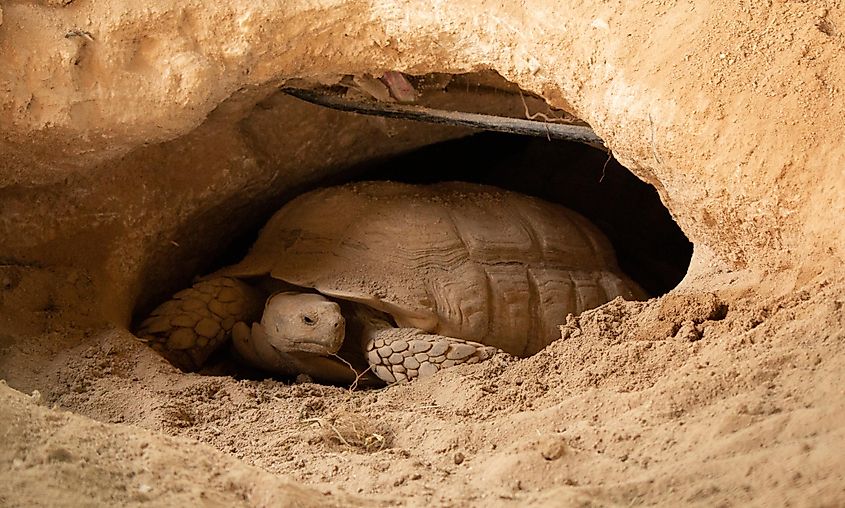
This tortoise species is observed in the desert regions of northwestern Mexico and in the southwestern portions of the United States. In order to reduce water loss and regulate its body temperature, the desert tortoise spends a significant time in burrows and rock shelters during hot periods. Within their burrows, the desert tortoise creates a subterranean environment that supports other invertebrates, reptiles, birds, and mammals. Moreover, the desert tortoise is also protected from freezing winter temperatures by remaining dormant. Being true herbivores, desert tortoises feed on grasses, herbs, cacti, wildflowers, etc. Coyotes, badgers, Gila monsters, roadrunners, ravens, and kit foxes are some of the known natural predators of the Desert Tortoise.
The above article discusses some fascinating animals that live under the ground. These faunal communities play a critical role in supporting and maintaining several ecosystem services, including recycling organic matter, nutrients, and energy. The decomposition of organic matter by the subterranean fauna is essential for plant growth and primary productivity. Moreover, all these animals are critical components in soil food webs. A knowledge of subterranean biodiversity is thus vital for a better understanding of the ecosystems on which we depend.











